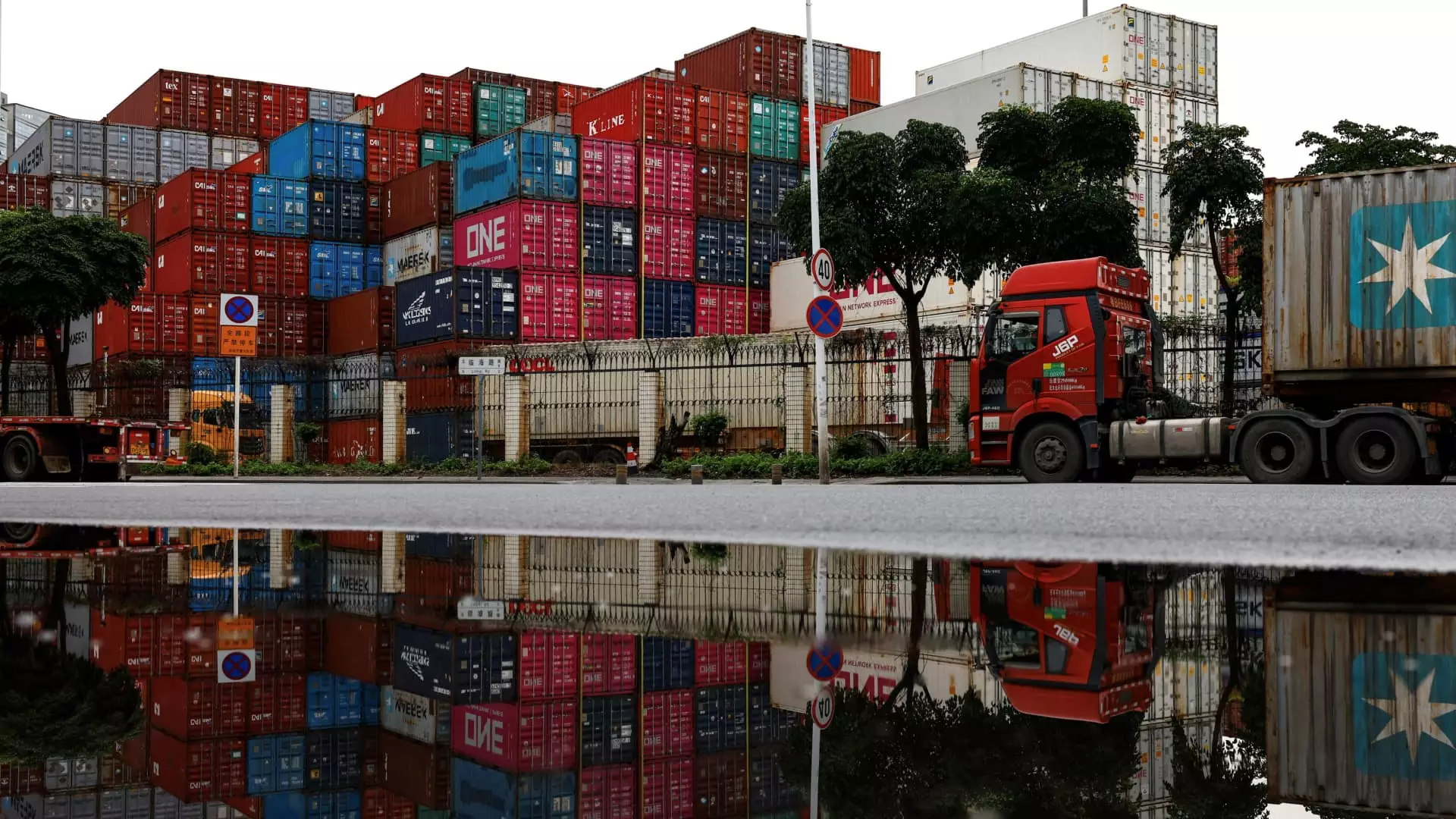Despite decades of meteoric growth, China’s economy is revealing alarming signs of strain that threaten to undermine its once-unassailable status as a global manufacturing powerhouse. Recent data painted a sobering picture: official manufacturing PMI figures for July dipped below the critical 50 threshold, indicating a contraction rather than expansion. While surface narratives may suggest resilience, the underlying truth is far more troubling. The decline from previous months isn’t merely seasonal; it’s a symptom of a deeper malaise fueled by shifting global trade dynamics, domestic overcapacity, and environmental upheaval.
This contraction signals that China’s manufacturing sector is faltering at a time when other major economies are grappling with their own economic headwinds. The contraction in key sub-indices such as employment and new orders underscores a fragile recovery—one that’s increasingly dependent on temporary boosts rather than sustainable growth. It forces us to question whether Beijing’s current strategy, heavily reliant on stimulus measures and policy tweaks, can truly arrest this downward spiral or merely delay inevitable corrections.
Trade Tensions and Geopolitical Shifts: The Unseen Ripple Effects
One cannot ignore the profound impact that escalating U.S.-China trade frictions have had on China’s economic outlook. The tit-for-tat tariffs, some exceeding 100%, have created an environment of uncertainty that compels manufacturers to rethink their supply chains and investment plans. The recent truncation of trade negotiations in Stockholm, with no extension of the temporary tariff rollbacks, reveals a toughening stance between these superpowers. The U.S.’s strategic pivot to Southeast Asia—exemplified by the new tariffs on goods transferred to Vietnam—illustrates Washington’s intent to undermine China’s manufacturing dominance and reshape global supply chains.
This geopolitical chess game is more than just a standoff; it’s a slow-moving destabilizer. Chinese companies are increasingly pressured to relocate production, anticipating prolonged trade disruptions and tariff hikes. Cameron Johnson’s comments about shifting orders to lower-tariff countries like Vietnam serve as a warning that China’s export-driven economy is beginning to hemorrhage market share. If this trend persists, it could further weaken China’s economic fundamentals, transforming a short-term adjustment into a structural decline.
Environmental Catastrophes and Domestic Challenges: The Avoidable Toll
Adding to economic woes are environmental disasters that now seem almost routine. Torrential rains and extreme heat have caused tragic loss of life and severely impacted manufacturing activity. The recent fatal floods near Beijing, which resulted in dozens of casualties, are merely the latest grim reminder that climate change is gnawing at China’s economic stability.
These environmental shocks are not incidental but are intertwined with China’s rapid urbanization and industrial expansion, often achieved at the expense of ecological balance. The Chinese government’s emphasis on “anti-involution” policies—aimed at reducing overcapacity—may be well-intentioned but appears to be strangling growth in key sectors. High temperatures, heavy rains, and resource rationing are eroding productivity, amplifying structural defects that cannot be fixed with mere monetary or fiscal interventions.
Furthermore, government signals of cautiousness—minimal new stimulus and restraint on property market support—highlight a maturity in policy approach that, while prudent, risks a dangerous complacency. If leaders continue to prioritize debt containment and environmental concerns over bold economic reforms, the country faces the peril of a protracted downturn masked behind superficial stability.
Shifting Global Dynamics: A Challenge to China’s Long-Term Growth Model
Despite some positive export figures—such as a 5.8% year-on-year rise in June—these are now fragile bulwarks against a turbulent sea of global uncertainty. Underpinning these figures is an economy increasingly reliant on external markets and supply chain adjustments. As the second quarter GDP growth slowed to 5.2%, down from 5.4%, the reality emerges that China’s growth model is increasingly unsustainable without radical reform.
The center of gravity is shifting inward, prompting questions about whether China’s focus on export-led development and infrastructure binge can deliver resilient growth in the face of structural shifts. As David Goldman’s analysts and economic experts highlight, the July PMI indicators suggest that the period of rapid recovery post-pandemic is over, and the economy is now confronting a “growth slowdown” that may extend into the foreseeable future.
If policymakers fail to adapt to these realities and continue down the current path of cautious stagnation, China risks entering a phase of stagnation masked as stability—an outcome that could fundamentally distort the global economic order. Businesses and governments worldwide need to understand that the Chinese model, long celebrated for its efficiency and scale, is increasingly plagued by internal contradictions and external pressures that may prove insurmountable without transformative change.

